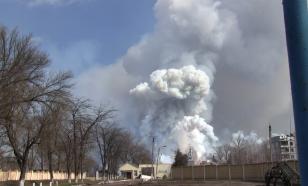Indians and Europeans Built Tower of Babel. What About Others?
The age of 87 Indo-European languages such as English, Lithuanian or Gujarati determined
Evolution biologists have once again provoked a stormy discussion on the date and place of origin of Indo-European languages. There is every reason to believe that the languages originated from people inhabiting the territory of contemporary Turkey 8,000-9,500 years ago. This agrees with the Biblical description of completion of the tower of Babel's construction.

Doctor Russell Gray and post-graduate student Quentin Atkinson from New Zealand's University of Oakland calculated the age of 87 Indo-European languages such as English, Lithuanian or Gujarati. According to the modeling results, the languages appeared 8,000-9,500 years ago.
The results of the research were published in Nature on November 27, which confirmed the theory that Indo-European languages arose in that epoch in the settlements practicing agriculture in Anatolia, the territory of today's Turkey.
The basic theory competing with the Anatolian one says that the languages appeared 6,000 years ago among nomadic tribes of Kurgan migrating over the territory of today's Russian steppe.
In 1786, it turned out that the Sanscrit language (a literary variety of the ancient Indian language from the Indo-European family of languages), the ancient Indian language was astonishingly similar to the Greek, Latin and English languages.
But where did the languages arise from and when did they part?
Doctor Gray decided to test the method by comparison of genes and making family trees which allows to determine when different biological materials formed. He says that language is very much like biological development and can change in the course of time.
Researchers used dictionaries and grammar as genes and employed the method for making a family tree for Indo-European languages.
The modeling revealed that the original parent language of all Indo-European languages is very close to the Anatolian theory of the languages' origin. The researchers verified their results several times before they published the final estimate of the age of Indo-European languages. The results astonishingly agree with the period when, according to the scenario of the tower of Babel construction, all people split and started speaking different languages.
The legend says that happened immediately after Noah's death; at that time, there was only one language on the Earth. People settled in the place called Sennaar where they started building a majestic city and the tower of Babel. But God stopped the construction, scattered all the people about the planet and mixed up their languages.
Babylon and Anatolia are situated rather close to each other; they are separated with the interfluve of Mesopotamia (800 kilometers of plain). The Ararat Mountain, where Noah's descendants had originally settled, is situated on the territory of today's Turkey (Anatolia). That is why it makes sense to state that people migrated to Europe through the island of Asia Minor and the Strait of Bosporus, in other words thought Anatolia. Those people who left Babylon eastward finally settled in India. That is how Indo-European languages might have arisen.
SciTecLibrary
Subscribe to Pravda.Ru Telegram channel, Facebook, RSS!


